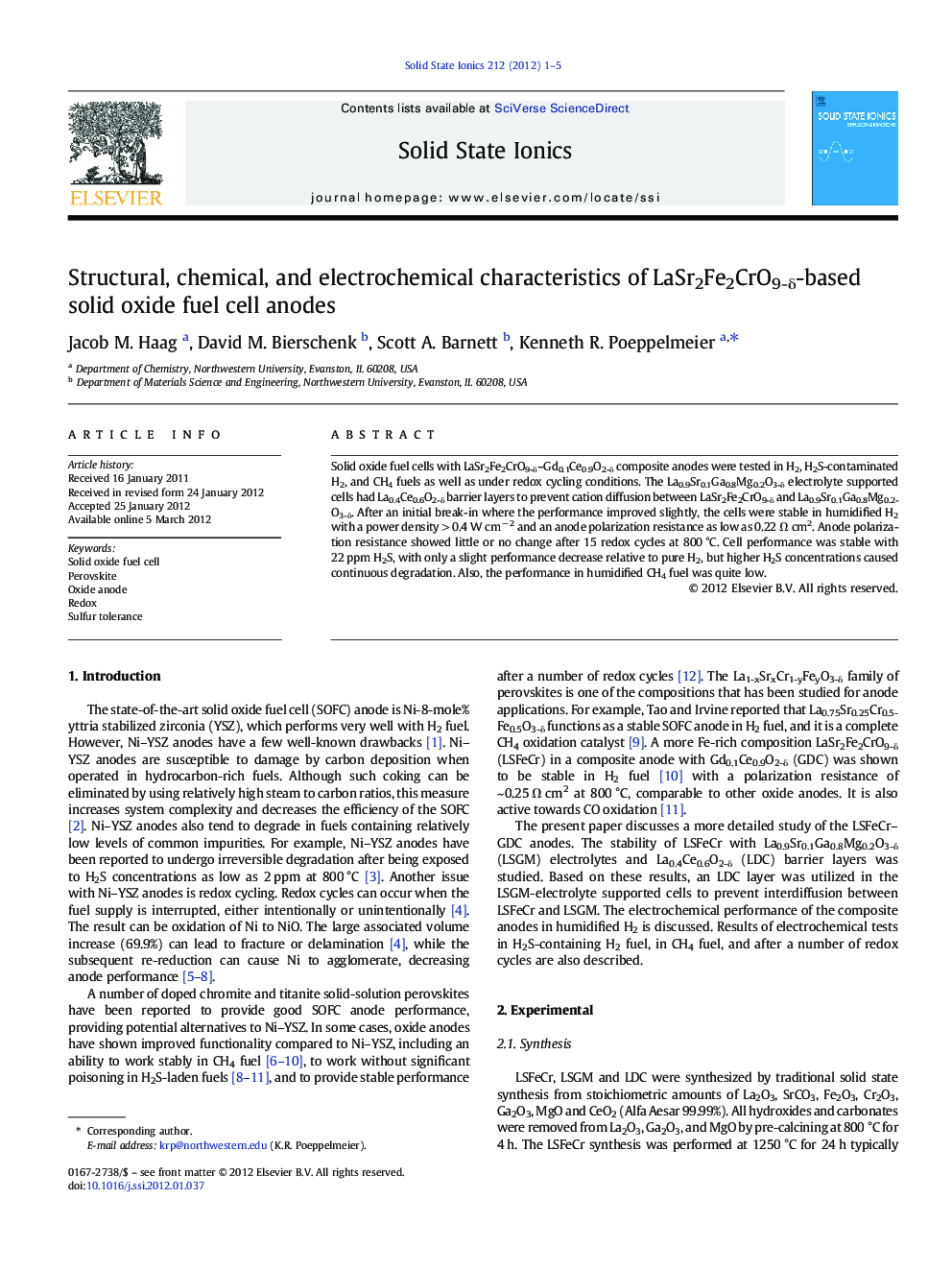| Article ID | Journal | Published Year | Pages | File Type |
|---|---|---|---|---|
| 1294458 | Solid State Ionics | 2012 | 5 Pages |
Solid oxide fuel cells with LaSr2Fe2CrO9-δ–Gd0.1Ce0.9O2-δ composite anodes were tested in H2, H2S-contaminated H2, and CH4 fuels as well as under redox cycling conditions. The La0.9Sr0.1Ga0.8Mg0.2O3-δ electrolyte supported cells had La0.4Ce0.6O2-δ barrier layers to prevent cation diffusion between LaSr2Fe2CrO9-δ and La0.9Sr0.1Ga0.8Mg0.2O3-δ. After an initial break-in where the performance improved slightly, the cells were stable in humidified H2 with a power density > 0.4 W cm− 2 and an anode polarization resistance as low as 0.22 Ω cm2. Anode polarization resistance showed little or no change after 15 redox cycles at 800 °C. Cell performance was stable with 22 ppm H2S, with only a slight performance decrease relative to pure H2, but higher H2S concentrations caused continuous degradation. Also, the performance in humidified CH4 fuel was quite low.
► LaSr2Fe2CrO9-δ– GDC anode performance can be improved with a La0.4Ce0.6O2-δ barrier layer. ► LaSr2Fe2CrO9-δ– Gd0.1Ce0.9O2-δ did not degrade after 15 redox cycles. ► LaSr2Fe2CrO9-δ– Gd0.1Ce0.9O2-δ anode performance was poor on CH4.
